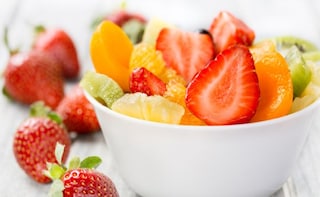Scientists have found that simple and inexpensive ultraviolet light technology can kill food-borne pathogens on the surface of certain fruits such as apples and pears.
against a mix of strains of E coli and listeria. They found that the light can inactivate up to 99.9 per cent of pathogens on apples and pears. However, listeria was more UVC resistant than E coli.
"If you have smoother skinned fruit, then this technology is really great," Sablani said. "If the fruits are very rough and if the level of contamination is low, it also works quite well," he said.
reducing the effects of UVC light. If bacterial contamination levels are high, then UVC
technology alone may not be sufficient to achieve the desired level of effectiveness, researchers said.(Simple Tricks to Remove Pesticides From Fruits and Vegetables)Sablani further remarked that research is underway to increase the effectiveness of UVC light on fruits with rough surfaces. "Interest in this technology is high because it's easy
to implement and inexpensive," he said. Sablani's colleagues included Roopesh M Syamaladevi and Karen Killinger from Washington State University and Achyut Adhikari from Louisiana State University. The study was published in the International Journal of Food Microbiology.
against a mix of strains of E coli and listeria. They found that the light can inactivate up to 99.9 per cent of pathogens on apples and pears. However, listeria was more UVC resistant than E coli.
"If you have smoother skinned fruit, then this technology is really great," Sablani said. "If the fruits are very rough and if the level of contamination is low, it also works quite well," he said.
Advertisement
reducing the effects of UVC light. If bacterial contamination levels are high, then UVC
technology alone may not be sufficient to achieve the desired level of effectiveness, researchers said.(Simple Tricks to Remove Pesticides From Fruits and Vegetables)Sablani further remarked that research is underway to increase the effectiveness of UVC light on fruits with rough surfaces. "Interest in this technology is high because it's easy
to implement and inexpensive," he said. Sablani's colleagues included Roopesh M Syamaladevi and Karen Killinger from Washington State University and Achyut Adhikari from Louisiana State University. The study was published in the International Journal of Food Microbiology.
For the latest food news, health tips and recipes, like us on Facebook or follow us on Twitter and YouTube.
Advertisement
